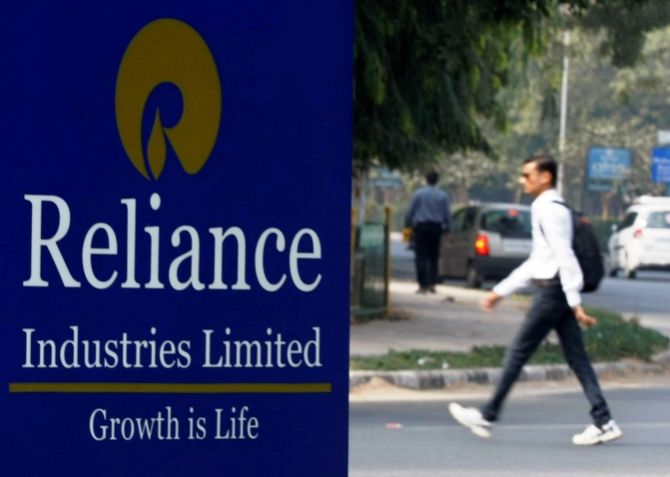 The less-than-anticipated gas production from Reliance Industries' flagship KG-D6 fields may have impacted fortunes of a number of its customers, but the company and its two partners have made almost two dozen interventions to arrest the decline from D1 and D3 discoveries.
The less-than-anticipated gas production from Reliance Industries' flagship KG-D6 fields may have impacted fortunes of a number of its customers, but the company and its two partners have made almost two dozen interventions to arrest the decline from D1 and D3 discoveries.
RIL, British Petroleum (BP) and Niko have together invested Rs 4,500 crore or Rs 45 billion in the past two years to sustain production, said a person close to the development.
Of the 23 interventions, 13 have worked while nine failed, the person said.
"These have assured that rather than dying, the fields sustain production. It is tricky to drill a depleting reservoir. RIL and BP have done a lot in the past four years since they came together," added the person.
In its annual report for 2014-15, RIL had said the company and its partners were trying to augment production through interventions, including side-tracking wells and setting up onshore terminal booster compressors, to offset the natural decline.
The KG-D6 block in the Krishna Godavari basin has not only been a cause of concern for RIL but energy planners, too. RIL had at one point projected gas output at 80 million standard cubic metres a day (mscmd).
The government had even made allotment for 60 mscmd on a firm basis and quantities beyond 60 mscmd on a fallback basis.
It was selling 14 mscmd of gas to fertiliser plants, 24 mscmd to power plants and the remaining 13 mscmd to others such as sponge iron plants, LPG, city gas distribution, petrochemical plants and refineries.
The production started declining from April 2010, with the current production of 11.4 mscmd barely meeting industry requirement.
In February 2011, BP, the British oil major, agreed to pay $7.2 billion for a 30 per cent share in 23 oil and gas blocks that RIL operates in India, including KG-D6. While the government approved the partnership in 21 blocks, RIL and BP now hold only four oil and gas blocks after surrendering the remaining blocks.
Niko Resources holds 10 per cent in RIL's KG block. BP also has a joint venture with RIL for sourcing and marketing gas.
When RIL found gas in the KG-D6 block, it was touted as the world's biggest gas find that year and India's largest in 30 years.
In record seven years, RIL brought the field on stream and began production from D1 and D3 discoveries in April 2009 with an investment of $9 billion in development of the D1-D3 block.
The KG-D6 fields, which began production in April 2009, hit a peak of 69.43 mscmd of gas in March 2010.
RIL had estimated 10 trillion cubic feet (tcf) of gas, but due to the reservoir's complexity and sand and water ingress, production declined. In the seven years, it has produced 2.1 tcf of gas.
"RIL could have had over-assessed the field's prospectivity," an analyst tracking the company said.
RIL and BP completed the initial exploratory work on the 21 blocks, but decided to retain only four of them.
"The players did not see much prospect in a few blocks, hence, relinquished them. Other blocks could have been promising though holding them would have meant going ahead with the next phase of development. The companies decided that they can go back to these blocks later, if required, and thus zeroed in on four blocks only," a source added.
KRISHNA-GODAVARI BASIN
RIL began production in 2009
Projected gas output was 80 mscmd
After hitting a peak of 69.43 mscmd in March 2010, production declined
Current production 11.4 mscmd
Estimated volume of the fields 10 tcf
So far, 2.1 tcf gas produced









